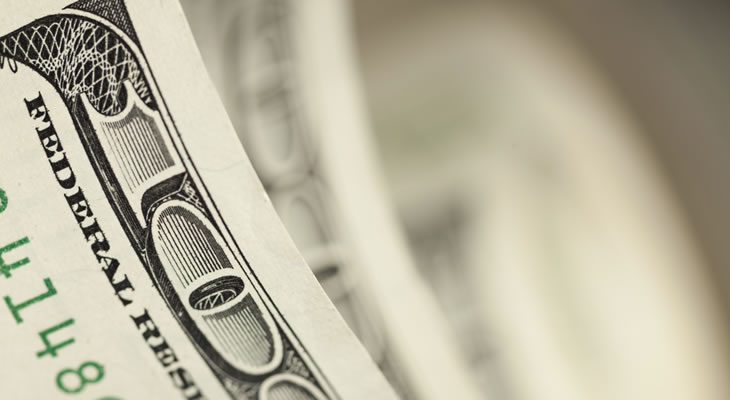Pound Sterling to US Dollar (GBP/USD) Exchange Rate
After advancing last week on the back of below-forecast US growth data, the Pound Sterling to US Dollar (GBP/USD) exchange rate softened at the start of the European session.
The Pound shed 0.3% prior to the publication of UK Consumer Credit numbers as investors fixated on recent comments issued by Federal Reserve Chairwoman Janet Yellen.
During a speech given on Friday Yellen intimated that the Fed is on track for a 2015 interest rate increase, lending the ‘Greenback’ support.
Later today the GBP/USD pairing could experience movement as a result of US Personal Consumption data.
The Pound Sterling to Euro (GBP/EUR) exchange rate advanced in the early hours of local trading having softened at the close of last week after Greece presented its creditors with reform proposals.
The Pound Sterling to US Dollar (GBP/USD) exchange rate is currently trading in the region of 1.4834
Earlier…
The Pound Sterling to US Dollar (GBP/USD) exchange rate advanced beyond the 1.49 level on Friday while the GBP/EUR currency pair recovered previous UK-inflation inspired losses.
Sterling’s uptrend against peers like the ‘Greenback’ and Euro was largely enabled by interest rate related comments issued by Bank of England (BoE) Governor Mark Carney towards the close of the week.
Although BoE officials, including policymaker Kristin Forbes, have implied that the central bank could cut borrowing costs to counter the impact of negative inflation, Carney asserted that the only direction rates will be going in is up.
Thursday’s better-than-forecast UK retail sales report also kept the Pound supported.
Sales were shown to have increased by 0.7% on the month in February rather than the 0.4% anticipated, and January’s figure was positively revised.
Pound Sterling to US Dollar (GBP/USD) Exchange Rate Gains as US Growth Data Falls Short
The Pound Sterling to US Dollar (GBP/USD) exchange rate consolidated its earlier advance during the North American session as the US released its final fourth quarter growth figures.
Although economists had hoped that the pace of expansion would be revised from 2.2% to 2.4%, it remained unchanged.
The Pound Sterling to US Dollar (GBP/USD) exchange rate hit a low of 1.4792
The data was a little disappointing, and analyst Andrew Wilkins noted; ‘US corporations continued to drive a healthy bottom-line. The dip does, however, suggest some impact on net income from a stronger Dollar. ‘
However, other US reports published earlier in the week (including the nation’s CPI and Manufacturing/Services PMI numbers) came in above forecast levels and supported the case for a summer interest rate increase from the Federal Reserve.
While UK inflation eased to 0.0%, US CPI advanced from -0.1% to 0.0%.
The Pound Sterling to US Dollar (GBP/USD) exchange rate achieved a high of 1.4922
‘Cable’ also came under pressure as renowned hawk and Fed official James Bullard asserted that the US economy could be put at ‘substantial’ risk if interest rates were left at zero for much longer.
Given that the Federal Open Market Committee (FOMC) recently stated that the US labour market will need to show greater improvement before interest rates can increase, the upcoming US Non-Farm Payrolls report is bound to be the greatest cause of GBP/USD exchange rate volatility in the days ahead.
Pound Sterling to Euro (GBP/EUR) Exchange Rate Strength Depends on Greece
Although the Pound Sterling to Euro (GBP/EUR) exchange rate prepared to close out the week trading in a softer position than it began, it did at least recover from the low of 1.35 recorded following the publication of the UK’s disappointing inflation data.
The GBP/EUR pairing advanced from 1.3619 to 1.3760 during Friday’s European session, with demand for the Euro initially easing amidst rumours that the Greek Finance Minister was planning on resigning his post.
While the gains were trimmed after the speculation was proven false, the Pound just about remained above the day’s opening level.
In the week ahead the ongoing Greek bailout negotiations will keep the Euro under pressure. If the nation looks like it will fail to reach an accord with its creditors before it runs out of funds on April 8th, we could see the Euro tumble.
European data, including inflation stats for the Eurozone and its largest economy, will also be a driving force behind GBP/EUR exchange rate shifts.
Pound Sterling to US Dollar (GBP/USD) Exchange Rate Forecast: Non-Farm Payrolls Could Push the US Dollar Higher
There might be a number of US reports with the potential to initiate GBP/USD exchange rate movement next week, but the ecostat most investors will be concerning themselves with is the US Non-Farm Payrolls report – due out on Friday.
The US unemployment rate is expected to remain unchanged in March following a jobs gain of 250,000 positions.
However, a surprisingly strong increase in employment could put a June interest rate hike from the Federal Reserve back on the table and push the GBP/USD currency pair to fresh lows.
At the close of the week the Pound Sterling to Euro (GBP/EUR) exchange rate is was trending in the region of 1.3674, the US Dollar to Euro (USD/EUR) exchange rate is currently trending in the region of 0.9186, the Euro to US Dollar (EUR/USD) exchange rate is currently trending in the region of 1.0882, the Pound Sterling to US Dollar (GBP/USD) exchange rate is currently trending in the region of 1.4880.

